by
Who isn’t fascinated by alligators? But don’t get too close…
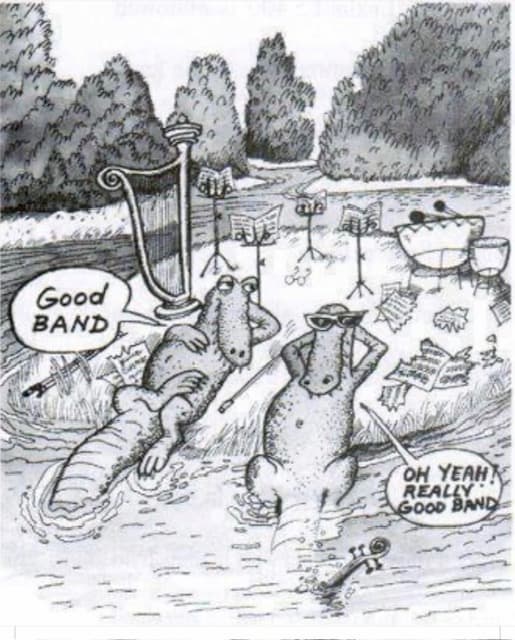
Here are two favorite jokes.
“What do you call an alligator that can play the banjo?”
A crock and roll musician.
“Why did the alligator have to sit at the back of the music classroom?”
He didn’t practice his scales.
“Why don’t you see crocodiles in the orchestra?”
Awkward! as you can see.
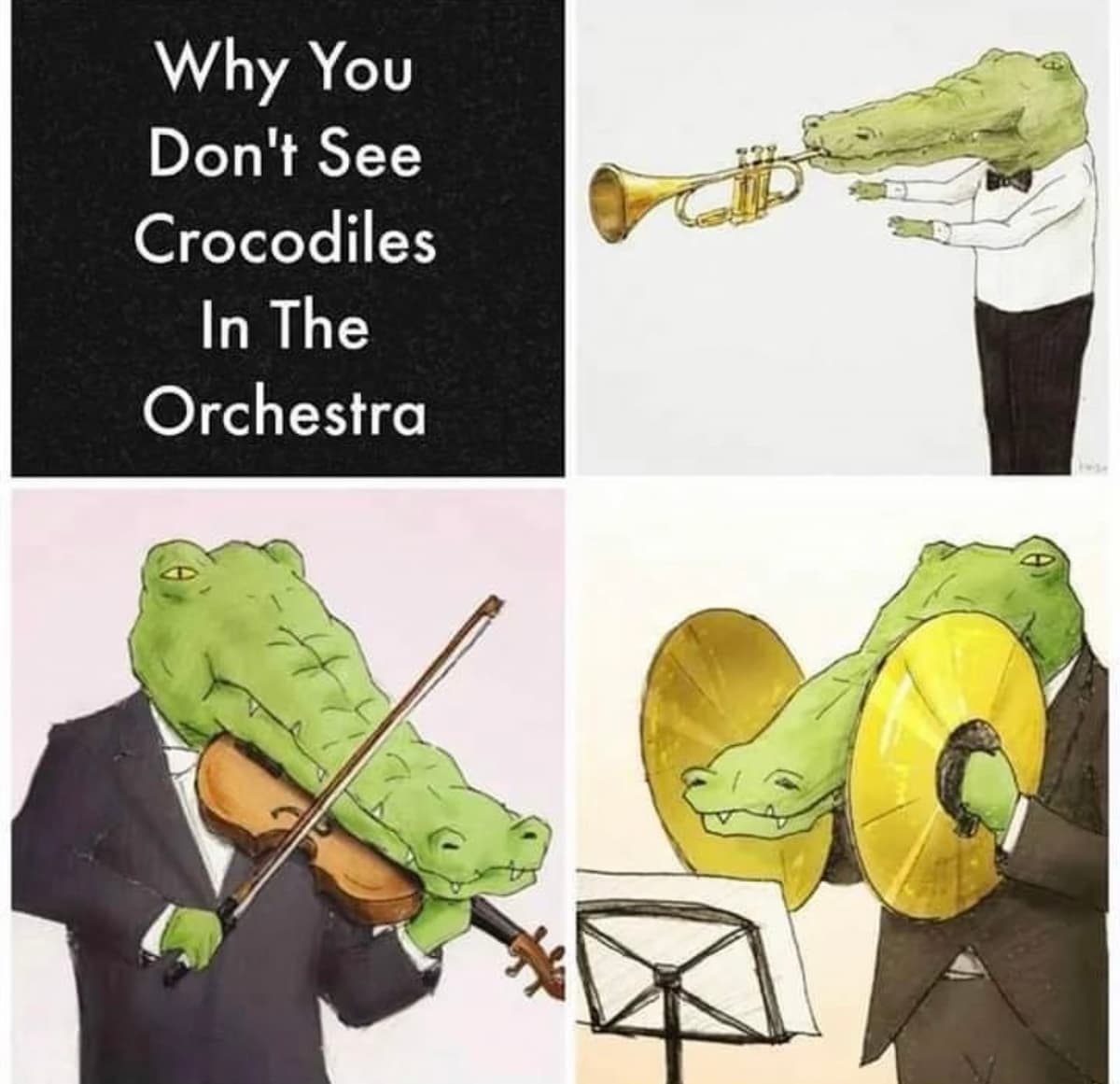
In music history, the three “B’s loom large. Bach, Beethoven, Brahms.
So, no wonder that B may be a musician’s favorite letter of the alphabet!
The letter also lends itself to lots of jokes, such as:
“Our dog’s Bach is worse than his bite.”
“He’s classically trained.”

A musician for sure, conceived this fable of B’s:
Last night a swarm of Bees showed up in the living room to listen to some music. But picking a genre frustrates them as there is so much to choose from. There’s bee-bop, Bee-thoven, Bee-yonce, the Bee-tles. There’s Amy Beech, the Bee-stie Boys, Cros-bee, Still and Nash, or Justin Bee-ver!
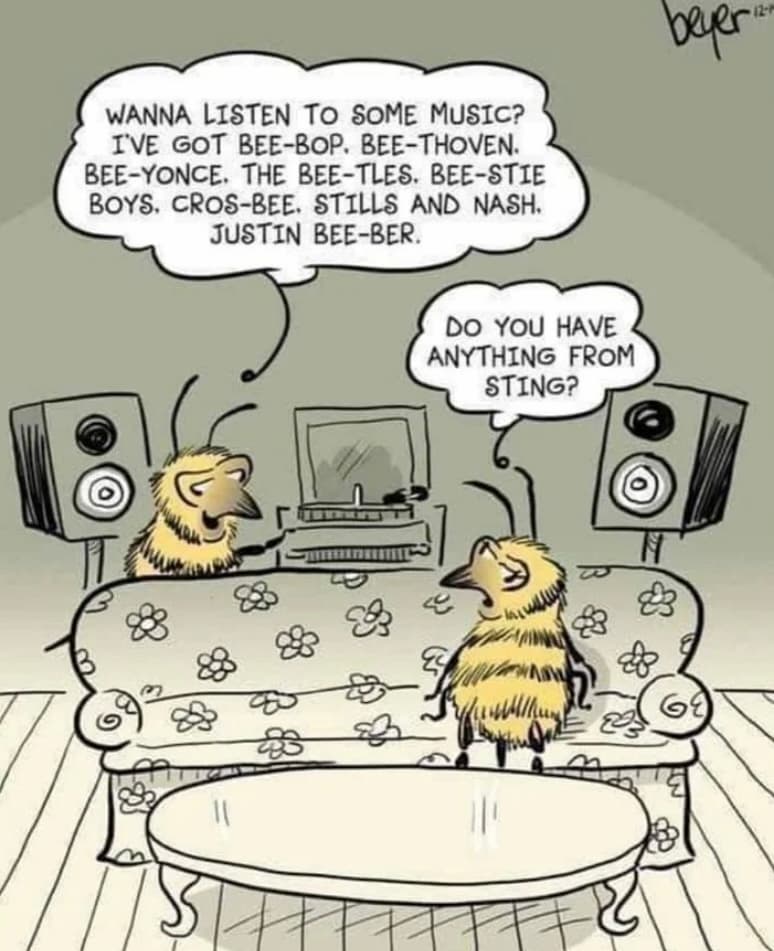
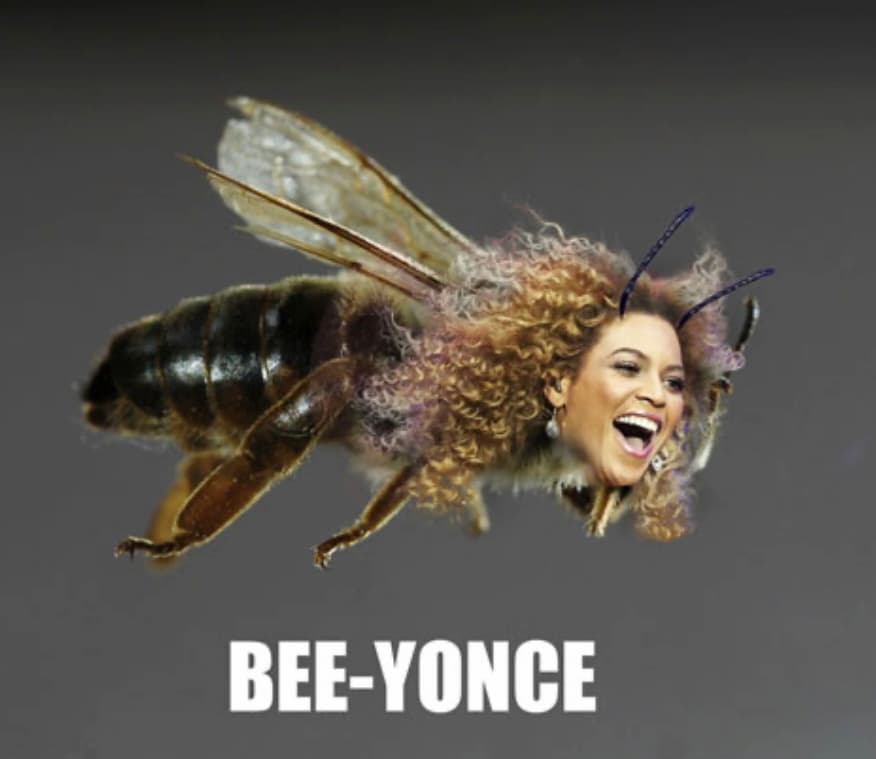
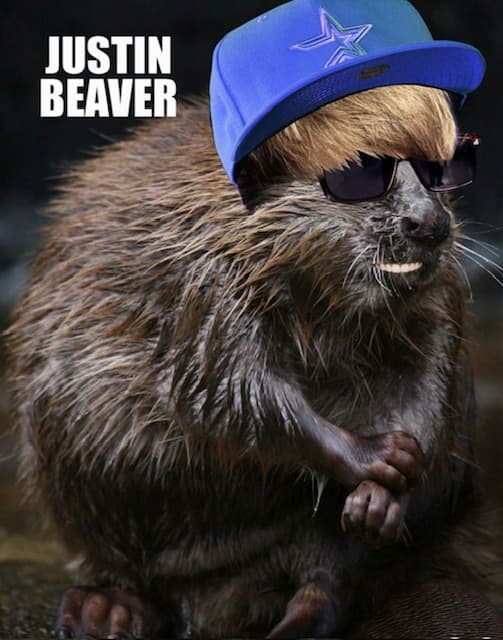
Beavers, though, can be showoffs.
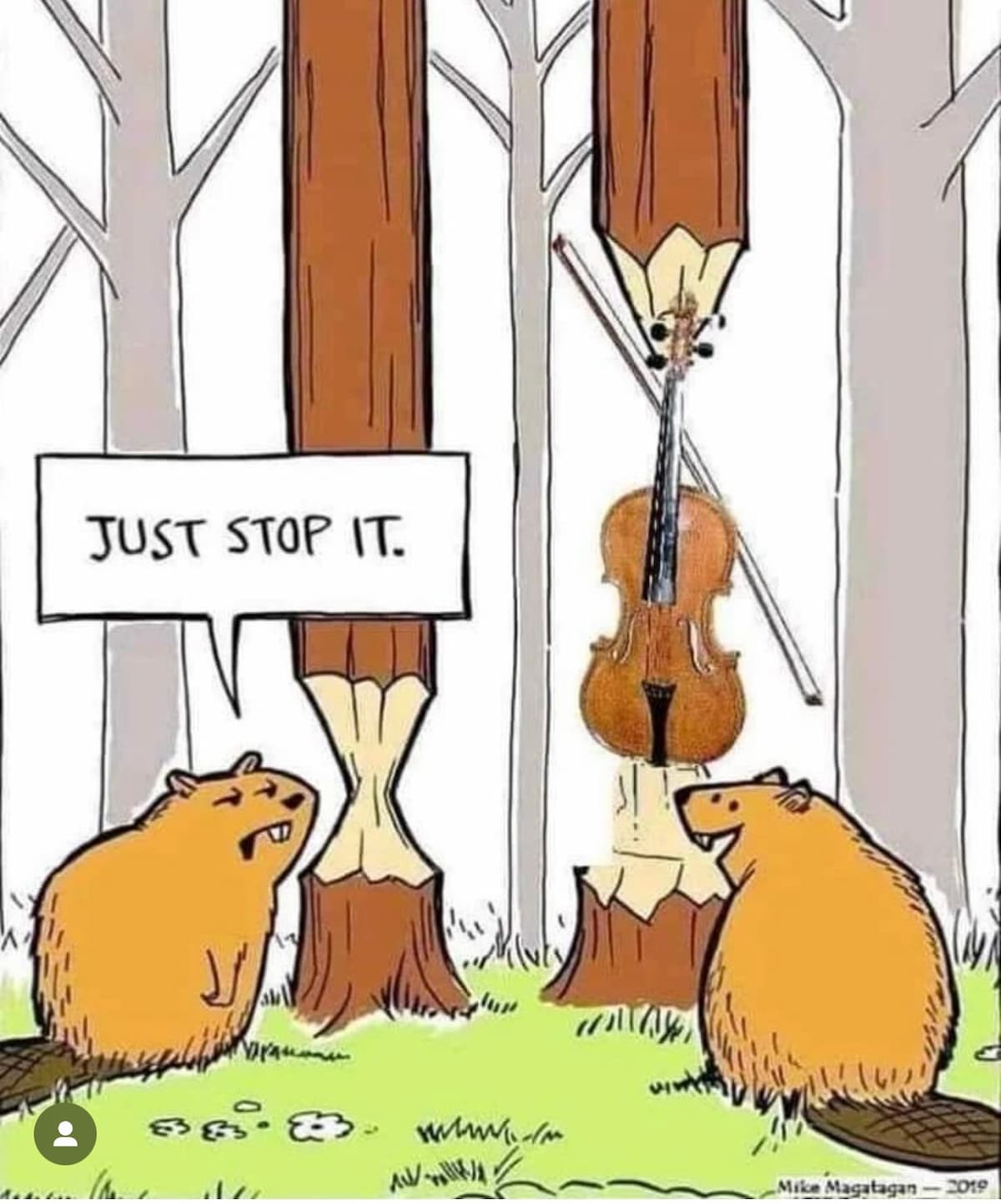
And don’t forget that fabulous foursome, The Beagles!
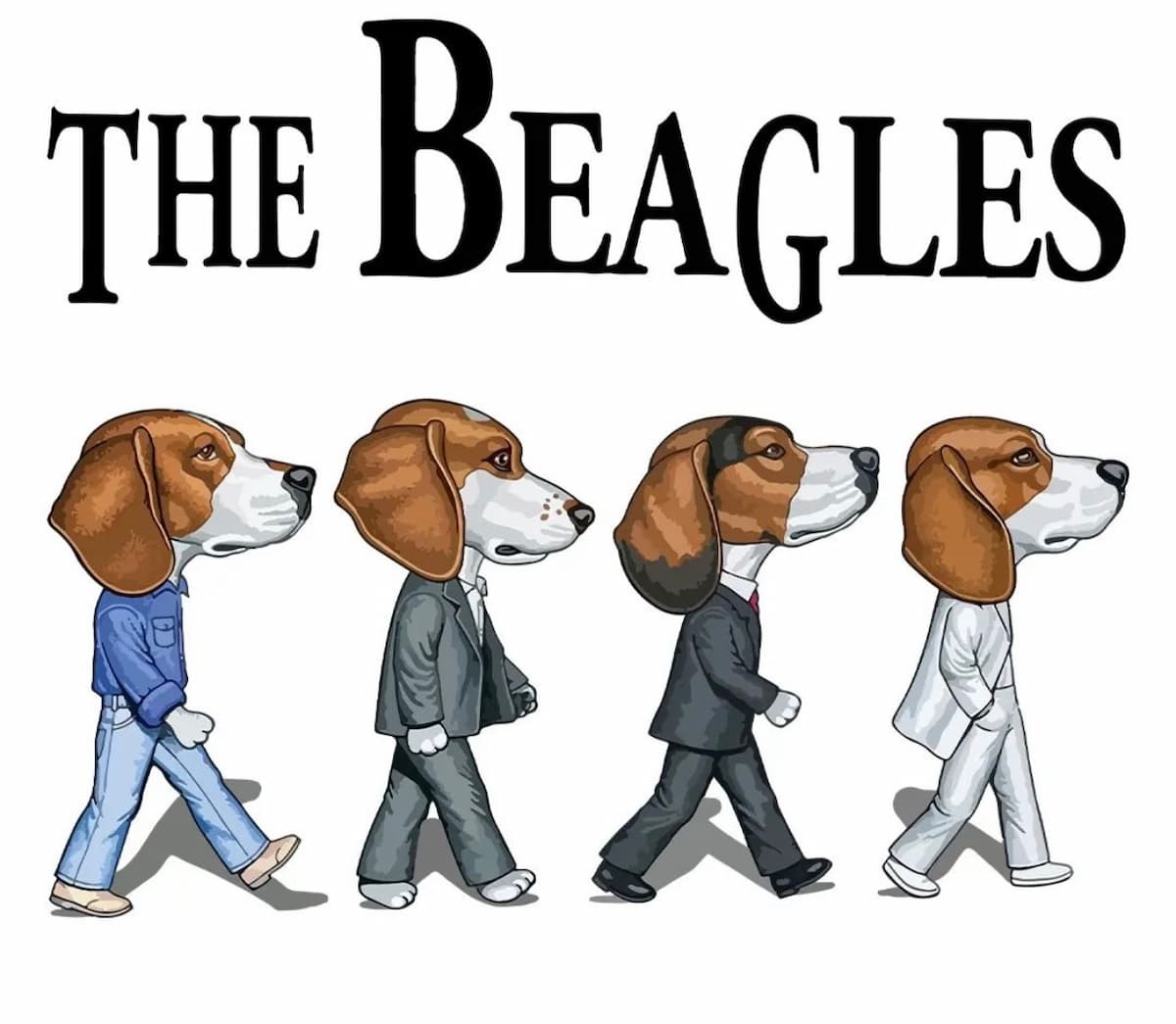
Let’s make sure cats have equal airtime.
According to this cartoon, Haydn might actually have been inspired by his cat.
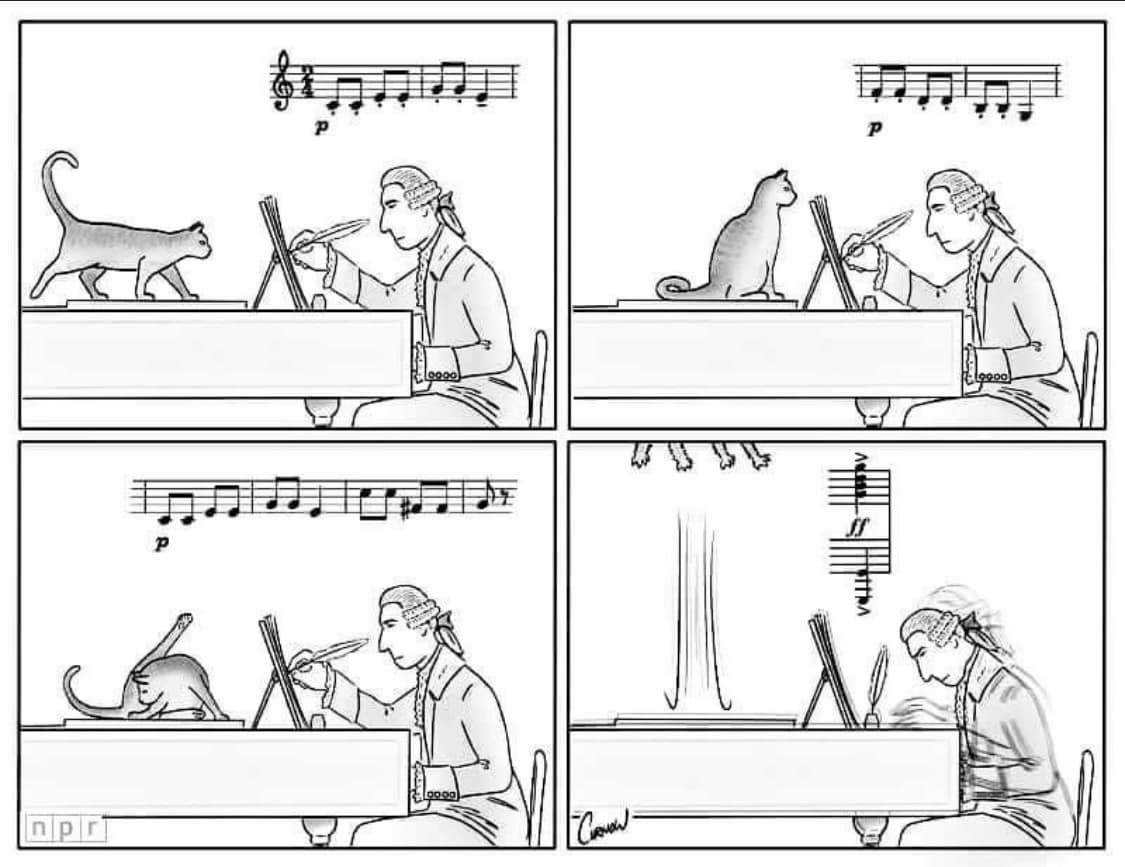
The piece of music depicted is the Symphony No. #94 in G Major Surprise 2nd movement, Andante, from 1791. Legend has it that the sudden forte chord and burst in the timpani was meant to wake up members of the audience who’d fallen asleep.
There are some cats who can play puuurfectly.
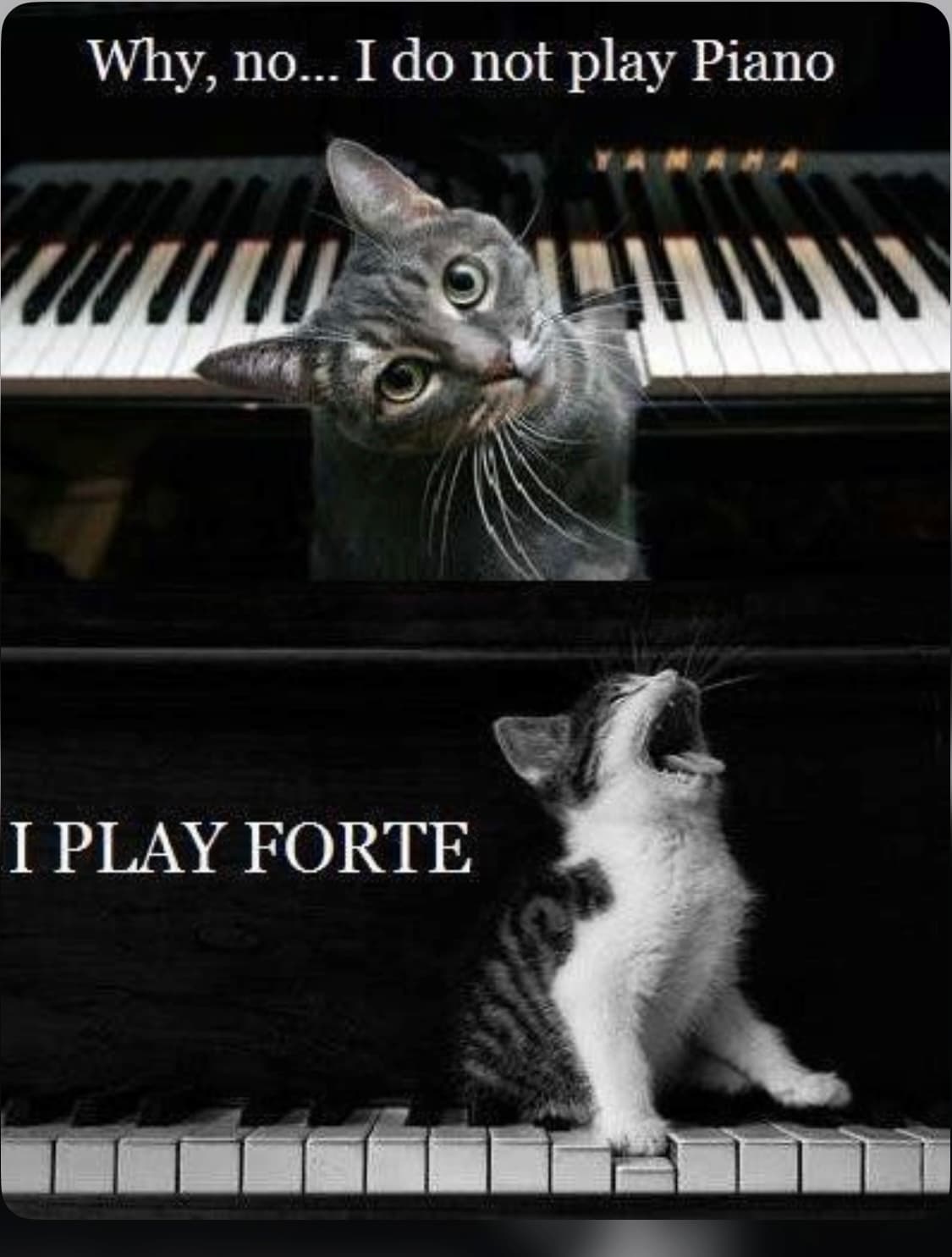
And other cats that can hold their own on the piano, even fooling your teacher!

Did you hear the one about the lovely flamingo who showed up for a Flamenco audition?
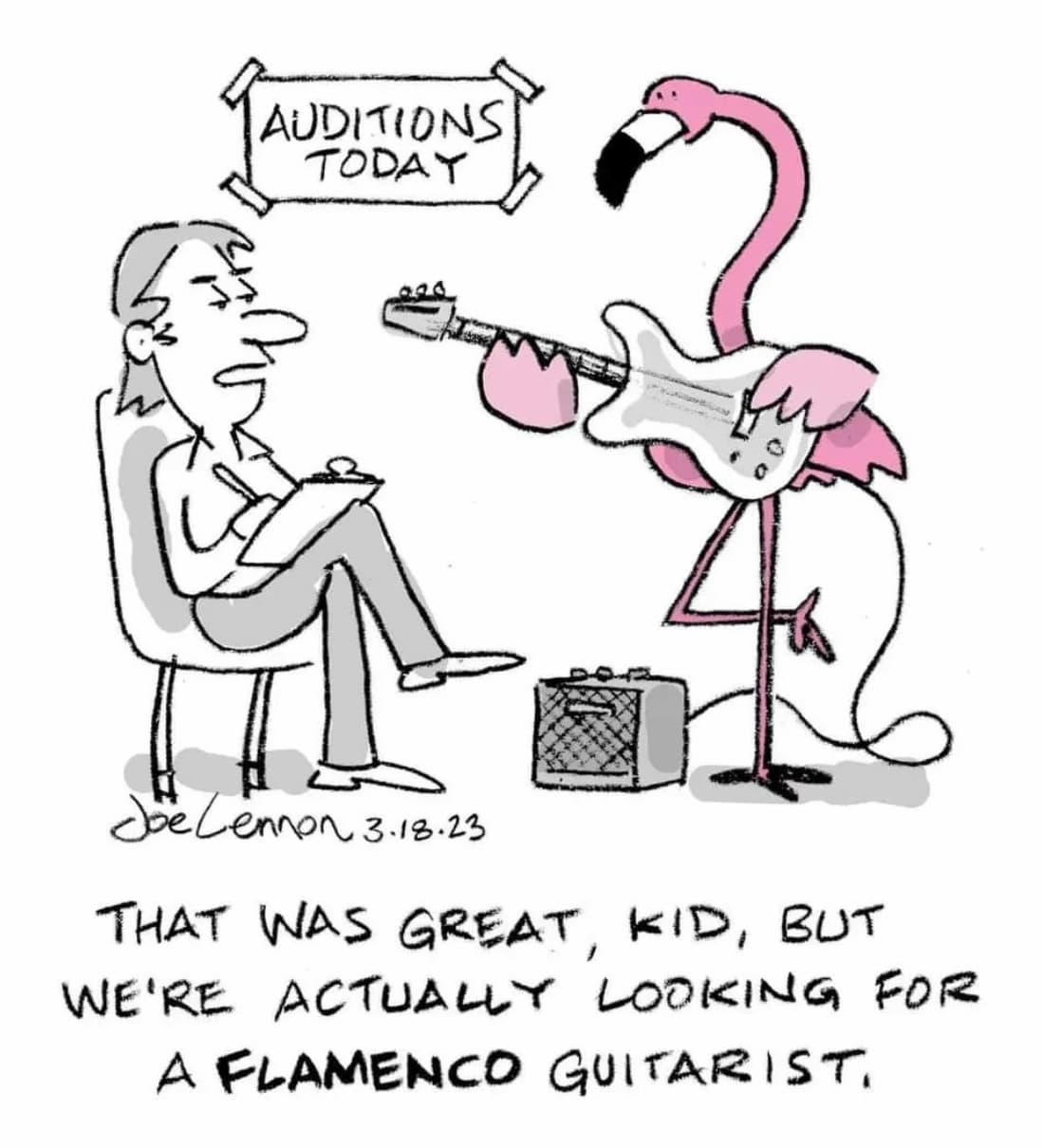
Or when the 8-limbed Octopus took the percussion audition and easily surpassed the other candidates?
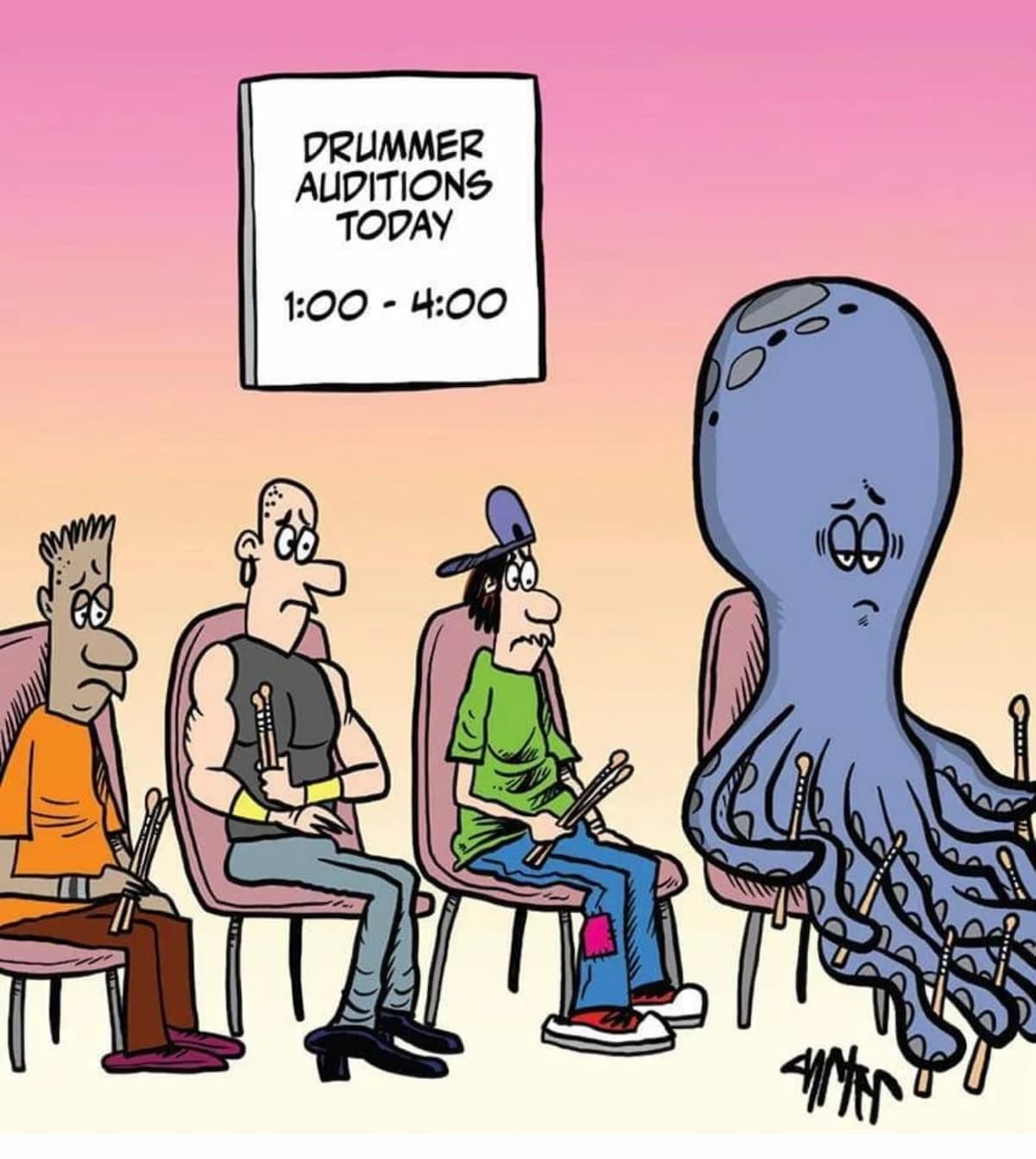
We musicians are often plagued by earworms—the tune you cannot get out of your head that repeats and repeats all day long. Birds, I guess, are not immune.
“Chirp! Great… Now I’ll have that stupid song stuck in my head all day.”
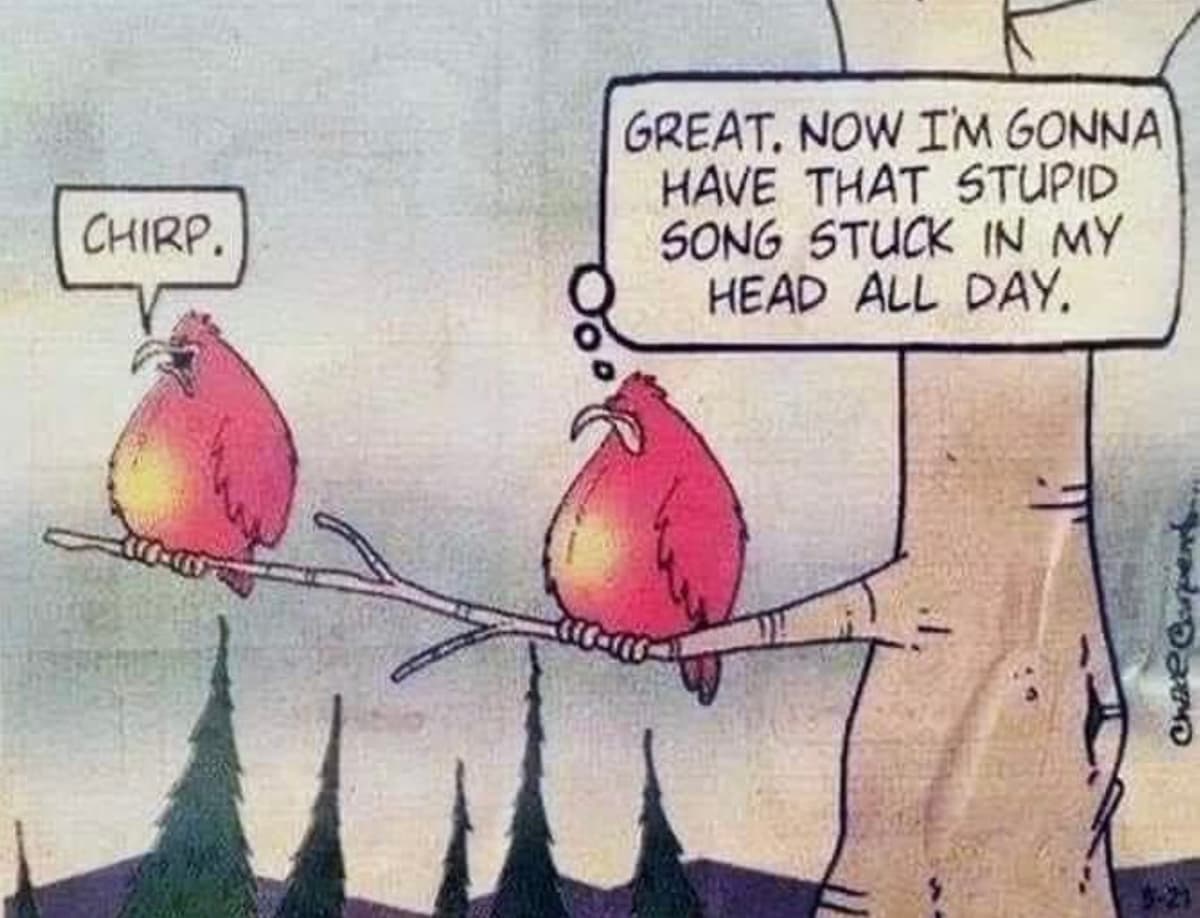
And speaking of birds:
“What do birds sing on Halloween?”
Trick or Tweet.
Here’s a handsome performer: Goose Springsteen.
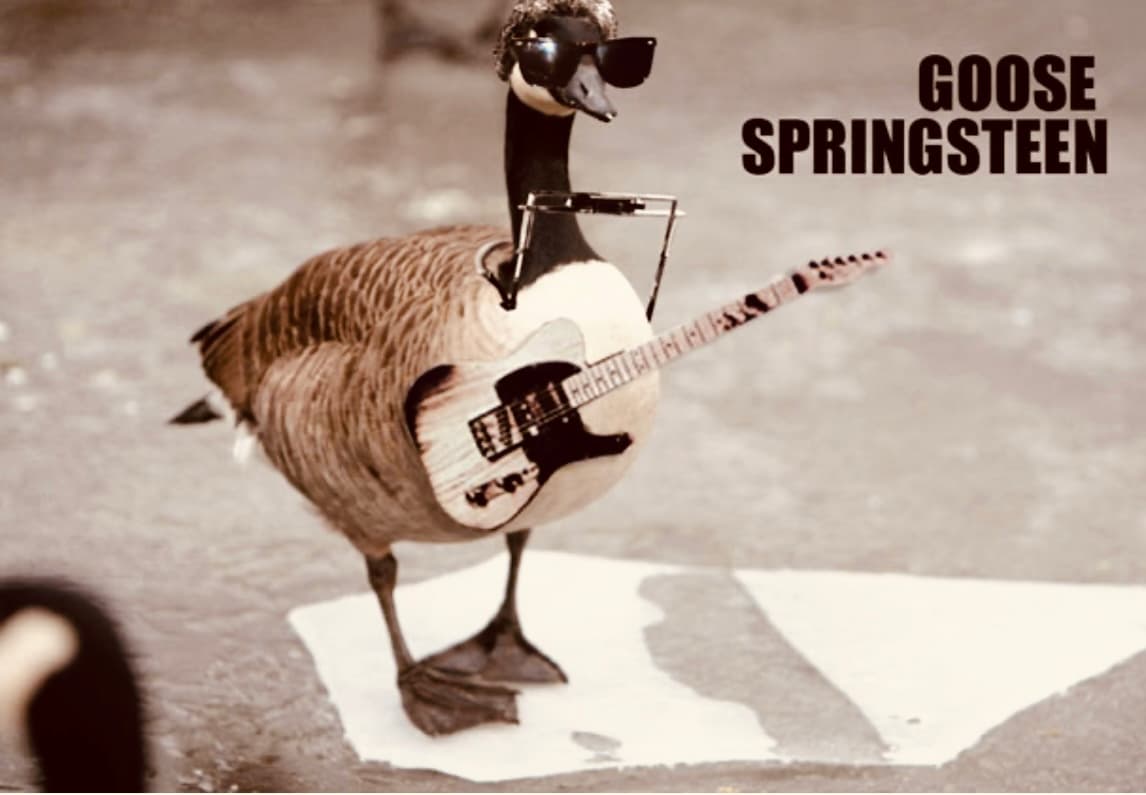
“What do you call the coyote that plays the French horn instead of howling.”
Cornyote!
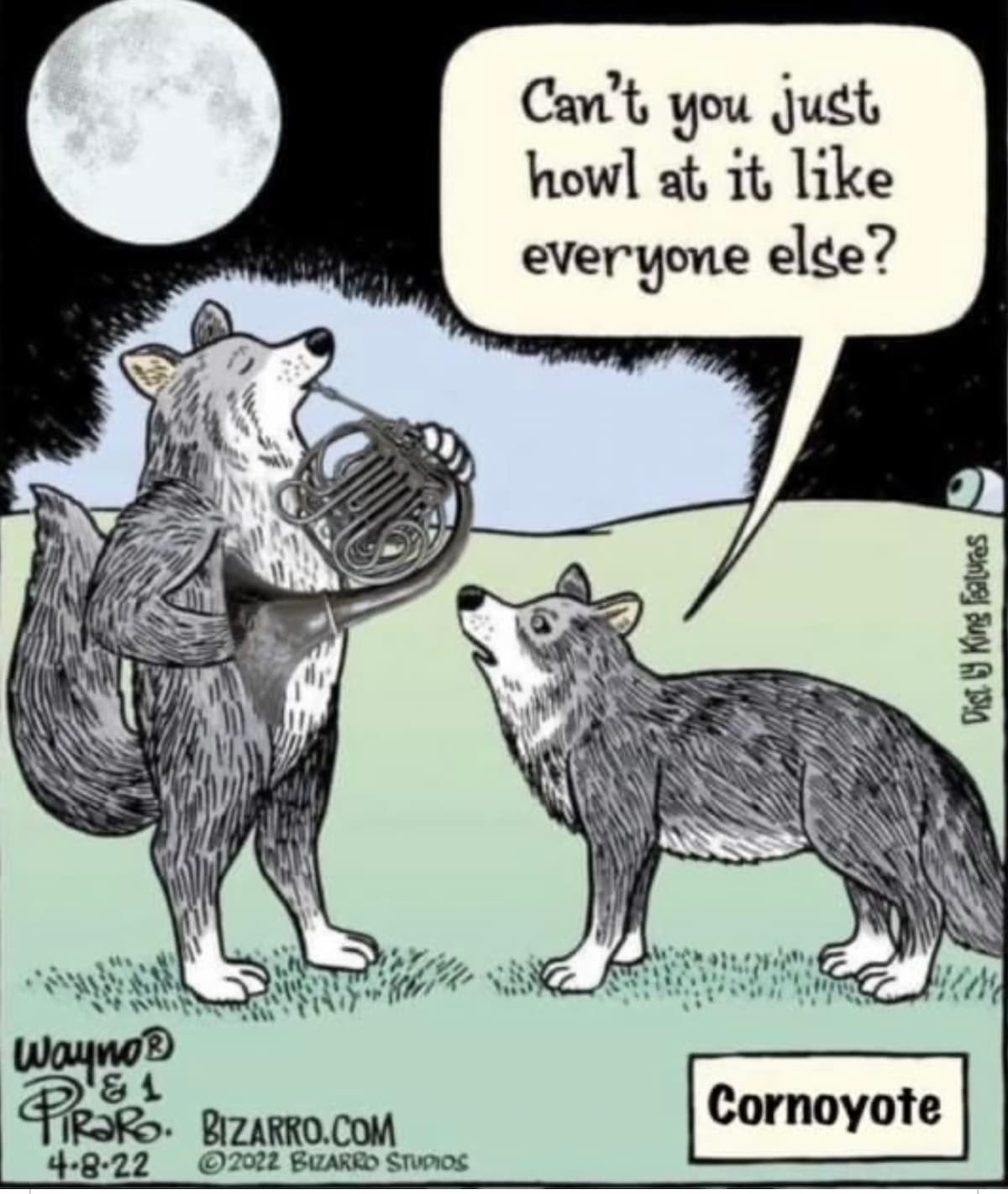
And if you liked that one, here is an oboe-players version.
Loboe!
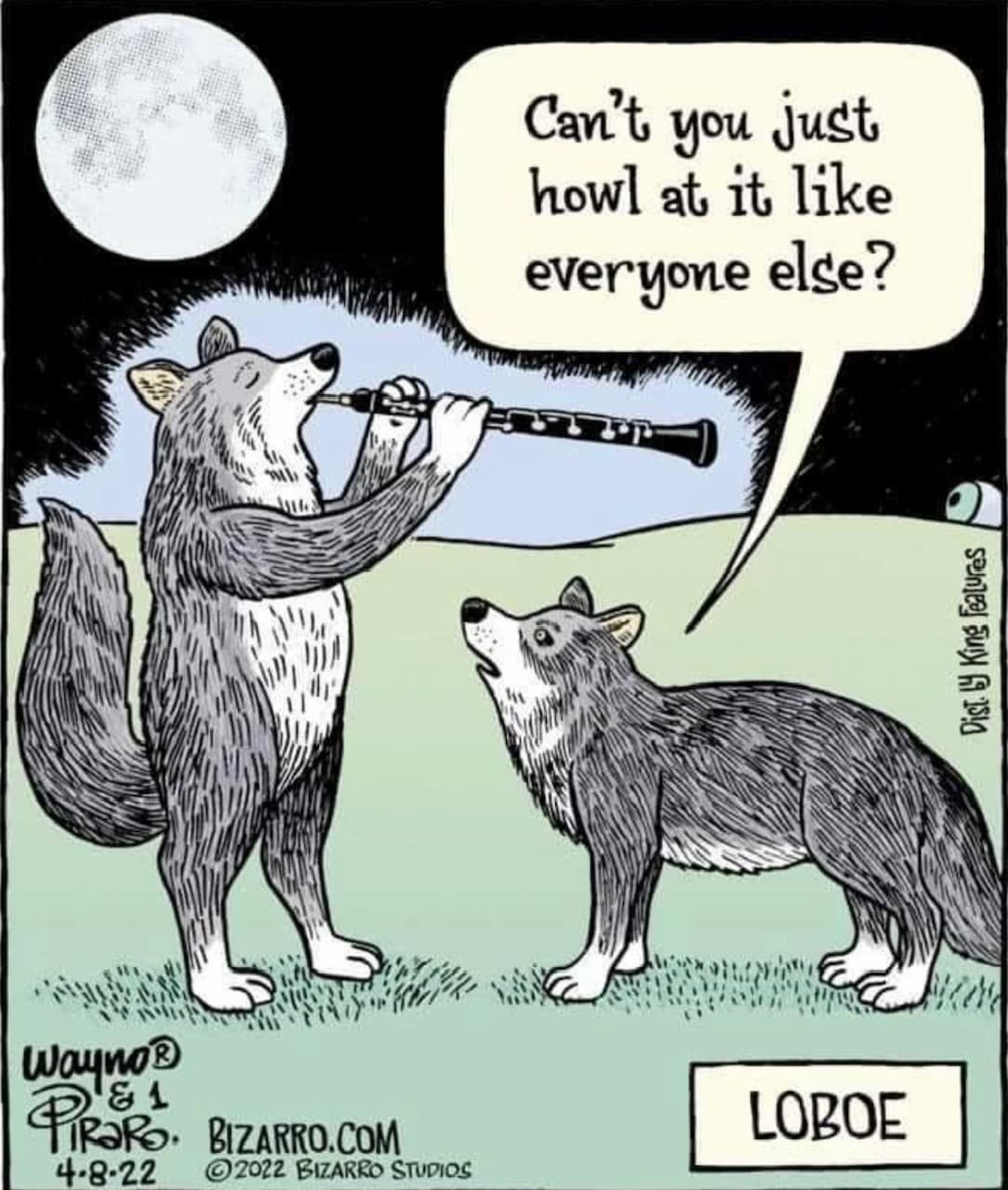
Watch out Trombone players. Playing a high-frequency riff might attract the attention of a lovesick elephant who could mistake your sound for a highly stimulated elephant looking for a mate.
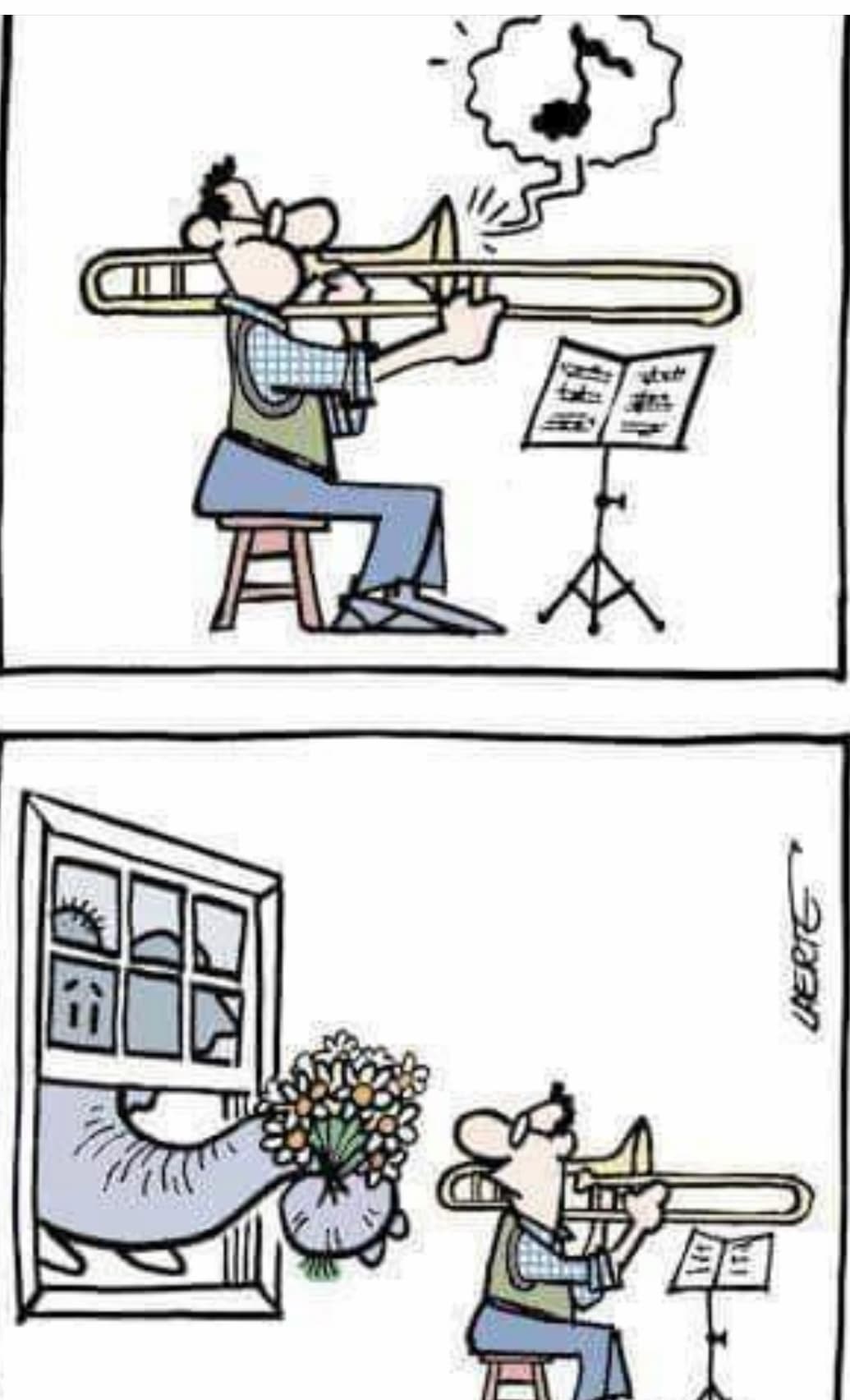
Piano jokes with animals are quite plentiful.
Have you ever tried playing hide n’ seek with a zebra?
Please, don’t teach the piano to a woodpecker! You’ll run into trouble.
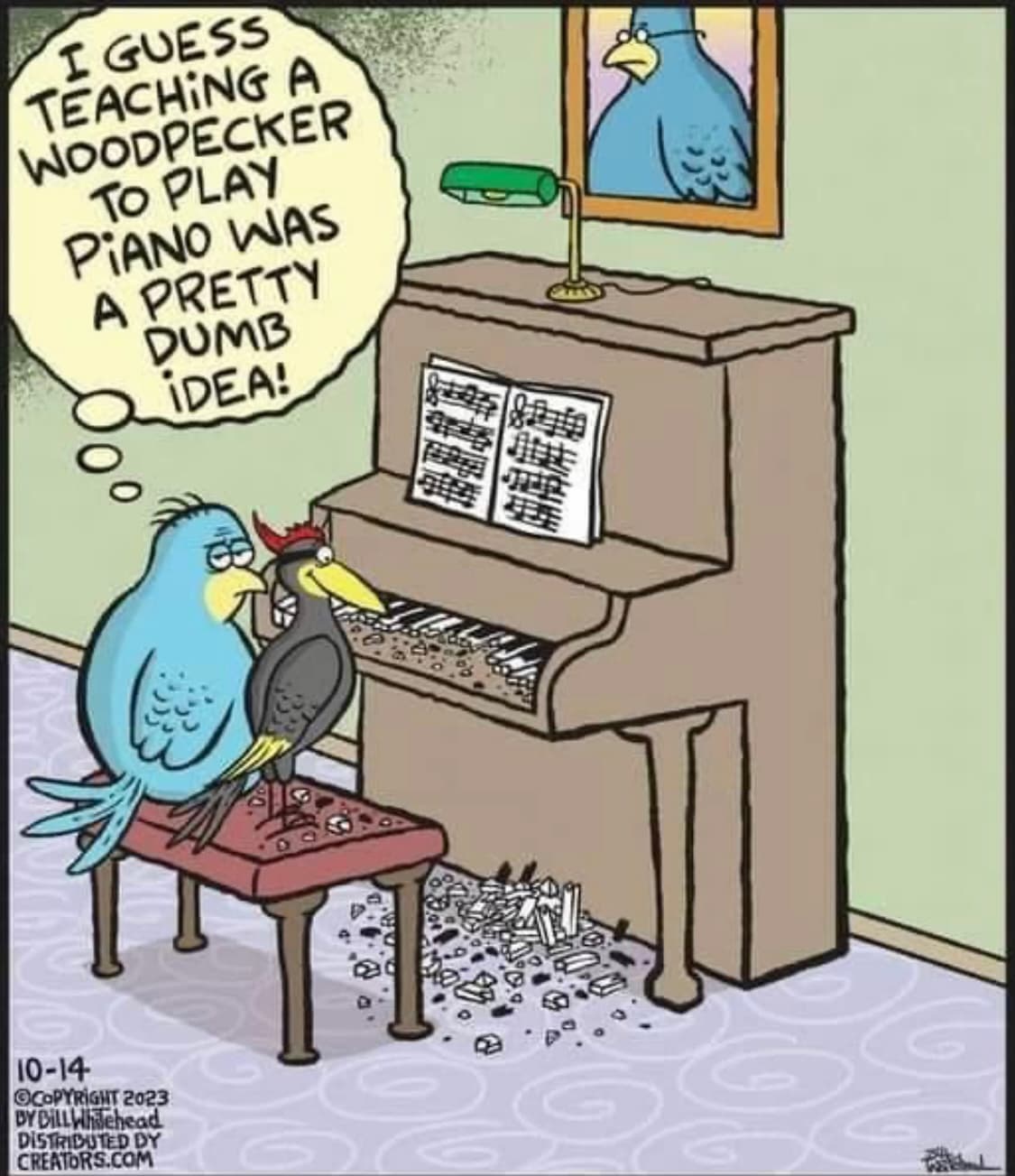
Snoopy tells us that you never know how a Chopin piano work will affect someone.
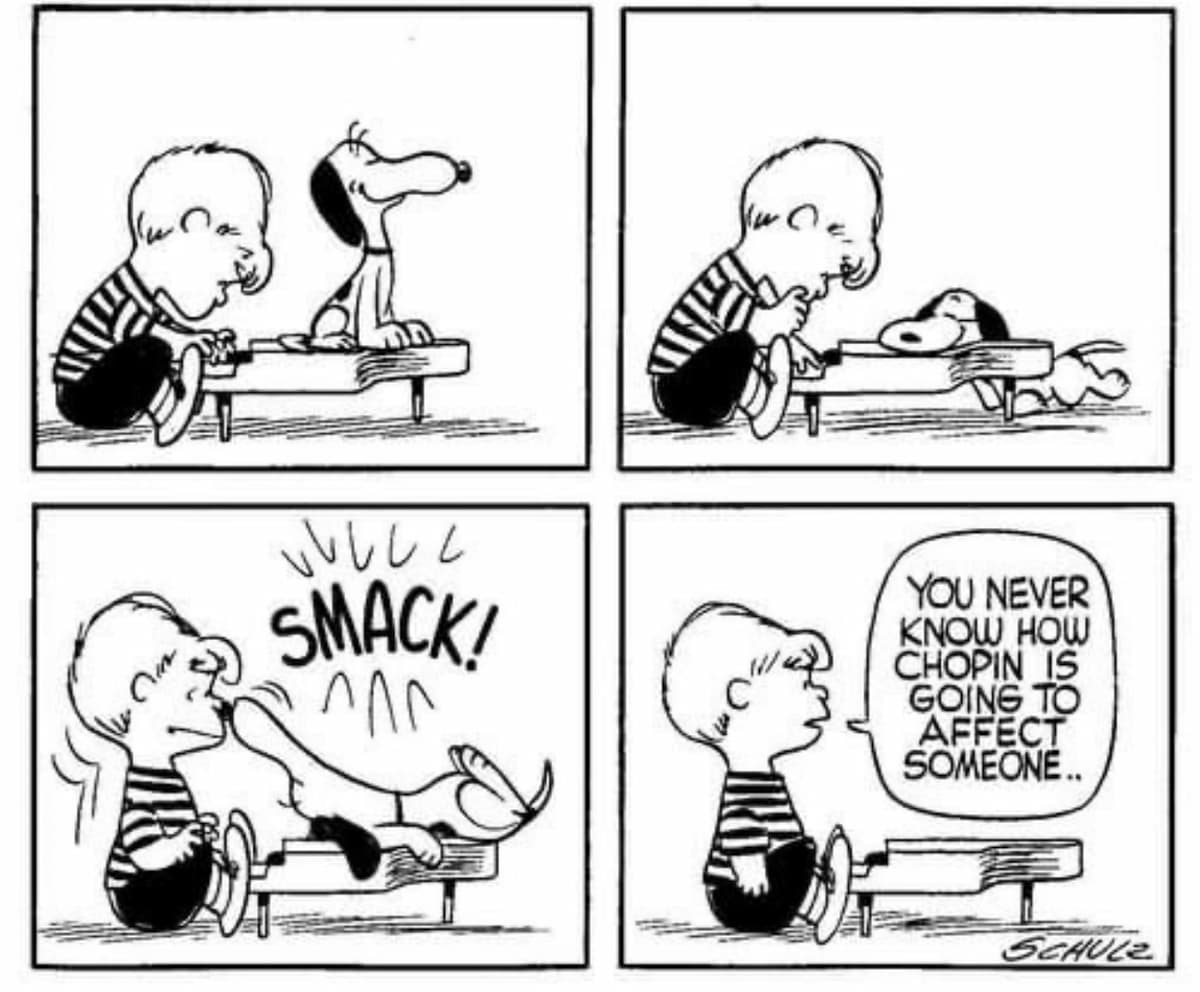
I think we agree that we are moved by these lovely Nocturnes, whether in the major or the minor key.
Did you know that the famous “Minute” Waltz in D-Flat Major Op. 64 No. 1, a miniature piece composed in 1847, was originally titled “The Waltz of the Little Dog.” As Chopin composed the music, a little dog was running around the piano chasing its tail. I can picture that. The series of grace notes in the middle section supposedly is to denote the little bell around the dog’s neck!
Now, to be fair, again, we should feature the cat.
What could be more amusing than Rossini’s Duetto Buffo di due Gatti the Cat Duet? The lyrics throughout are simply the word.
Let’s end with a few quick puns.
Percussionists enjoy this one:
“What’s the most musical part of a chicken?”
The Drumstick.
“What kind of music do Santa’s elves listen to?”
Wrap music.
“What music should you listen to while fishing?”
Something catchy!
I hope you found these humorous. To conclude our musical animals feature, did you know that many of our favorite composers have written bird and animal music? Check out one of our previous articles.